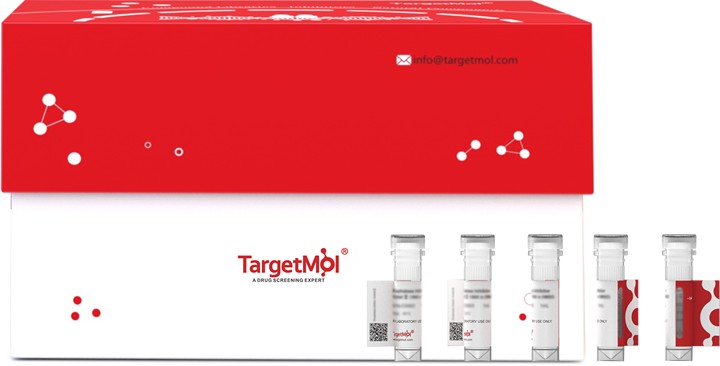- Remove All
 Your shopping cart is currently empty
Your shopping cart is currently empty
BCL2A1 Protein, Human, Recombinant (His)
B-cell lymphoma 2-related protein A1 (BCL2A1) is a member of the BCL-2 family of anti-apoptotic proteins that confers resistance to treatment with anti-cancer drugs. Immunohistochemical expression of Wnt11 and BCL2A1 in complete moles and normal villi. Bcl2 family proteins control mitochondrial apoptosis and its members exert critical cell type and differentiation stage-specific functions, acting as barriers against autoimmunity or transformation. Anti-apoptotic Bcl2a1/Bfl1/A1 is frequently deregulated in different types of blood cancers in humans but its physiological role is poorly understood as quadruplication of the Bcl2a1 gene locus in mice hampers conventional gene targeting strategies. In a physiological context, BCL2A1 is mainly expressed in the hematopoietic system, where it facilitates survival of selected leukocytes subsets and inflammation. However, BCL2A1 is overexpressed in a variety of cancer cells, including hematological malignancies and solid tumors, and may contribute to tumor progression. The development of small molecule inhibitors of BCL2A1 may be a promising approach mainly to sensitize tumor cells for apoptosis and thus improve the efficiency of anti-cancer therapy.

BCL2A1 Protein, Human, Recombinant (His)
| Pack Size | Price | Availability | Quantity |
|---|---|---|---|
| 200 μg | $904 | 7-10 days |
Product Information
| Biological Activity | Activity testing is in progress. It is theoretically active, but we cannot guarantee it. If you require protein activity, we recommend choosing the eukaryotic expression version first. |
| Description | B-cell lymphoma 2-related protein A1 (BCL2A1) is a member of the BCL-2 family of anti-apoptotic proteins that confers resistance to treatment with anti-cancer drugs. Immunohistochemical expression of Wnt11 and BCL2A1 in complete moles and normal villi. Bcl2 family proteins control mitochondrial apoptosis and its members exert critical cell type and differentiation stage-specific functions, acting as barriers against autoimmunity or transformation. Anti-apoptotic Bcl2a1/Bfl1/A1 is frequently deregulated in different types of blood cancers in humans but its physiological role is poorly understood as quadruplication of the Bcl2a1 gene locus in mice hampers conventional gene targeting strategies. In a physiological context, BCL2A1 is mainly expressed in the hematopoietic system, where it facilitates survival of selected leukocytes subsets and inflammation. However, BCL2A1 is overexpressed in a variety of cancer cells, including hematological malignancies and solid tumors, and may contribute to tumor progression. The development of small molecule inhibitors of BCL2A1 may be a promising approach mainly to sensitize tumor cells for apoptosis and thus improve the efficiency of anti-cancer therapy. |
| Species | Human |
| Expression System | E. coli |
| Tag | N-His |
| Accession Number | Q16548-1 |
| Synonyms | HBPA1,GRS,BFL1,BCL2L5,BCL2 related protein A1,ACC-2,ACC2,ACC-1,ACC1 |
| Construction | A DNA sequence encoding the human BCL2A1 (NP_004040 ) (Met1-Ser152) was expressed with a polyhistidine tag at the N-terminus. Predicted N terminal: Met 1 |
| Protein Purity | > 85 % as determined by SDS-PAGE. |
| Molecular Weight | 19.7 kDa (predicted) |
| Endotoxin | Please contact us for more information. |
| Formulation | Lyophilized from a solution filtered through a 0.22 μm filter, containing PBS pH 7.4. Typically, a mixture containing 5% to 8% trehalose, mannitol, and 0.01% Tween 80 is incorporated as a protective agent before lyophilization. |
| Reconstitution | A Certificate of Analysis (CoA) containing reconstitution instructions is included with the products. Please refer to the CoA for detailed information. |
| Stability & Storage | It is recommended to store recombinant proteins at -20°C to -80°C for future use. Lyophilized powders can be stably stored for over 12 months, while liquid products can be stored for 6-12 months at -80°C. For reconstituted protein solutions, the solution can be stored at -20°C to -80°C for at least 3 months. Please avoid multiple freeze-thaw cycles and store products in aliquots. |
| Shipping | In general, Lyophilized powders are shipping with blue ice. |
| Research Background | B-cell lymphoma 2-related protein A1 (BCL2A1) is a member of the BCL-2 family of anti-apoptotic proteins that confers resistance to treatment with anti-cancer drugs. Immunohistochemical expression of Wnt11 and BCL2A1 in complete moles and normal villi. Bcl2 family proteins control mitochondrial apoptosis and its members exert critical cell type and differentiation stage-specific functions, acting as barriers against autoimmunity or transformation. Anti-apoptotic Bcl2a1/Bfl1/A1 is frequently deregulated in different types of blood cancers in humans but its physiological role is poorly understood as quadruplication of the Bcl2a1 gene locus in mice hampers conventional gene targeting strategies. In a physiological context, BCL2A1 is mainly expressed in the hematopoietic system, where it facilitates survival of selected leukocytes subsets and inflammation. However, BCL2A1 is overexpressed in a variety of cancer cells, including hematological malignancies and solid tumors, and may contribute to tumor progression. The development of small molecule inhibitors of BCL2A1 may be a promising approach mainly to sensitize tumor cells for apoptosis and thus improve the efficiency of anti-cancer therapy. |
Dose Conversion
Calculator
Tech Support

Copyright © 2015-2025 TargetMol Chemicals Inc. All Rights Reserved.


